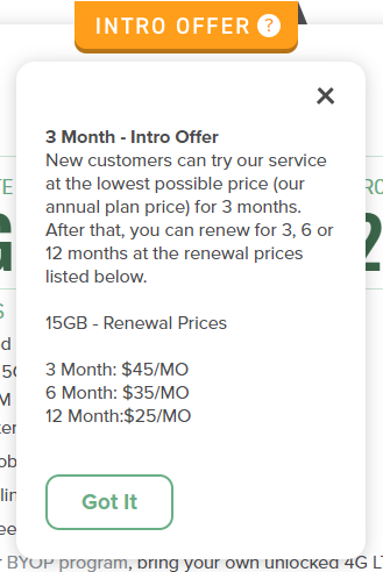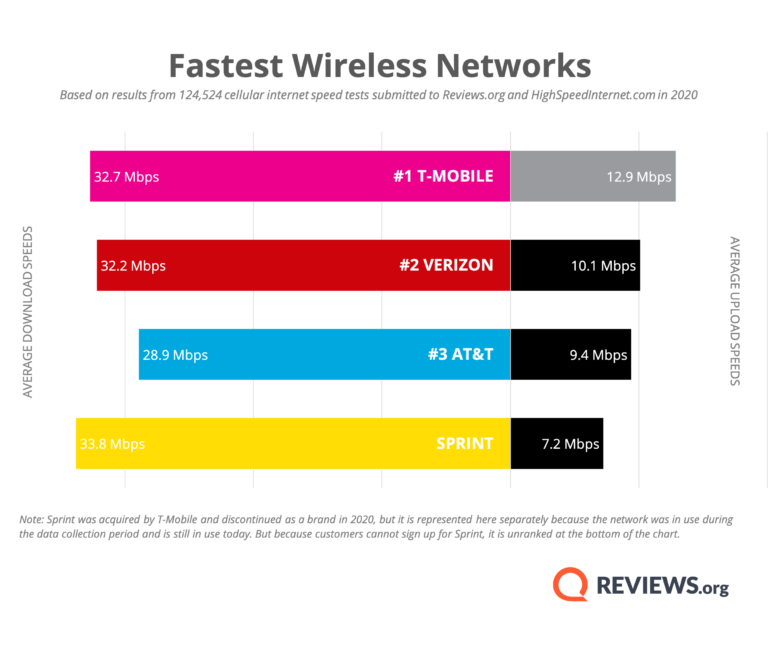Meanwhile, Reach Mobile is pricier, has a low data cap on its unlimited data plan, and also has issues with data slowdowns. But, despite these flaws, the company’s charitable giving programs will definitely attract some socially conscious customers. That’s the short story. But we’ll go over a whole lot more in this in-depth review.
Data: Having enough data is essential to having a great experience with your cell phone plan. If you run out mid-month, your smartphone basically becomes a stupidphone. Price: Obviously, you don’t want to overpay. But it can get confusing when it comes to discounts and promotional deals. Make sure you read the fine print for price changes or other sneaky issues before you sign up. Coverage: There are three major networks in the US: AT&T, T-Mobile, and Verizon. Each network has its own perks and coverage holes. Look at coverage maps to see which is best in your area. Features: Not all plans come with special features, like hotspot data, international benefits, and HD video streaming. Sign up for a plan that fits your lifestyle.
Unlimited talk and text 5G network access Mobile hotspot data Coverage on the T-Mobile network
Mint’s data plans also come with 4–15 GB of data. Here’s a look at the prices. Of course, there are some cons to keep in mind when it comes to Mint. The biggest one is probably data deprioritization. This means that T-Mobile (which owns the network Mint uses) can slow down the data of Mint customers whenever it wants. Deprioritization becomes an issue during times of network congestion—if you’re in a crowded downtown area, a sports arena, or just in a suburb during peak hours. It can be hard to get enough data speed to do some pretty basic things, like playing a game on your phone, during these times. Mint’s plans are super cheap for the first month, but then the price can go up dramatically. For example, the 15 GB plan goes from $25 to $45 a month! The only way to avoid this price increase is to sign up for 12 months in advance. Here’s a screenshot from Mint’s website that shows the details. This chart shows the plan pricing. But there’s actually a pretty good reason for Reach’s prices being higher than Mint’s: the company gives a portion of its profits away to charity. You can even use the Reach Mobile app to track how much you’ve personally contributed to the company’s charitable programs. Despite being called “unlimited” plans, both Mint’s and Reach’s plans have a data cap. If you go over that cap, your speeds will be greatly reduced. With Mint’s Unlimited Data Plan, that cap is 35 GB. With Reach’s All-In Unlimited Plan, it’s just 25 GB. So, it really comes down to this: a 35 GB plan for $30 a month vs. a 15 GB plan for $40 a month. When you look at it that way, there’s really no contest. Both Mint and Reach offer family plans. But, before you get too excited, hear this: neither company actually gives you a discount for adding additional lines. For that, you’ll want to check out other carriers like Visible Wireless and T-Mobile. Here’s a glimpse of how much you’d pay for unlimited data family plans with four lines from Mint and Reach. In short, going with a family plan from Mint or Reach may help simplify paying your bills, but it won’t save you any of your hard-earned cash. So Mint and Reach customers will actually be on T-Mobile’s network. This is good news because T-Mobile invested heavily in data speeds. According to our own data from over 100,000 mobile customers, T-Mobile has the fastest 4G LTE download speeds in the industry. But all that speed might not mean much if you don’t have good coverage. T-Mobile definitely has some gaps in coverage, especially in rural areas. Take a look at the coverage map below to make sure that T-Mobile’s network covers your neck of the woods. These charts show the most popular phone deals from Mint and Reach. You’ll notice that Mint has a better selection of flagship devices, while Reach focuses on budget phones, like the iPhone SE (2020).
Plans: Reach and Mint offer a similar spread of plans. But there’s one key difference: Mint’s prices are just better. So, unless you’re drawn to Reach’s charitable giving, Mint is probably the better option in terms of value. Family plans: Both Mint and Reach will let you add extra lines to your account. However, neither carrier offers discounts on family plans (check out Visible or T-Mobile for great family plan deals). Mint Mobile still wins in this category because its prices are better. Coverage and performance: Mint and Reach both have issues with data deprioritization and throttling. While Mint’s data speeds may end up being a bit faster, Reach’s nationwide coverage is more robust. So you’ll have to decide which matters more to you: data speeds or coverage.
Ultimately, our evaluations and recommendations were based on each carriers’ cost, data, perks, performance, and coverage. In this case, we also considered Reach’s charitable giving as a factor. If you want to learn more about how we review cell phone plans, please read our article on the subject.





